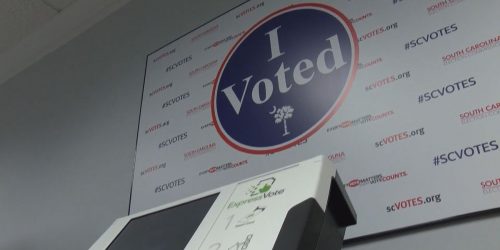SC Primary Day 2020 is in the books
Yesterday was Democratic and Republican Primary day in South Carolina. We’ve seen the vote counts, but what do they actually mean? Here are a few thoughts to put it all in perspective.
View complete results from yesterday’s primary here.
- There was a bit of a ho-hum factor for sure. It wasn’t a Presidential Primary, and Governor and State Constitutional Officers are not up for grabs this year (that will come in 2022). The U.S. Senate contest on the Republican side that could have been downright interesting for Lindsey Graham turned out to be a snoozer-blowout. (That sounds strangely familiar doesn’t it?)
- If Nancy Mace was looking for momentum in her bid to unseat first term Democrat Joe Cunningham, she sure got it. No runoff required.
- Of the 46 seats in the SC Senate, 22 of them had primaries for one party or the other (48%). On the House side, primaries were held for only 37 of 124 seats (30%). That’s quite a gap. Perhaps the prestige of a Senate seat (and a Senate campaign often with television) is a greater attraction than a more shoe leather House effort.
- The GOP advisory questions were not much of a surprise, particularly the voter registration by party question, where Republican primary voters sent a clear message that they want party preference to be declared in advance of—rather than on election day.
- Republicans and Democrats perceived as “middle of the road” (which drive partisans in both parties crazy) each seemed to survive Primary Day by winning outright or making it into runoffs. There was no Ted Cruz or AOC counterpart kicking out an incumbent or pulling an upset by appealing to ideological purity. The Grand Strand seemed to favor incumbents as is its pattern.
- That said, there were early evening nail-biters for incumbents Luke Rankin in the Senate and Jimmy Bales, Jeff Bradley, Bill Chumley, Neal Collins, Bill Crosby, Sylleste Davis, and Kit Spires in the House as the tallies of results seemed stuck on the reports from just a few precincts for well into the night. In the end, Bales, Crosby, and Spires lost. Rankin, Chumley and Collins (who had not one, but two challengers each) are in a runoff. Davis won in a close one, by 41 votes at last count. Bradley won easily.
- Swing Senate Districts that will be interesting to watch in the fall are those that are held by an incumbent Democrat where Trump and/or McMaster did well: Senate 10 (McMaster carried 58%), Senate 11 (Trump carried 57%), Senate 20 (Trump and Clinton split 46%-47%), Senate 26 (Trump carried 55%) and Senate 35 (Trump carried 50%-47%).
- Democrats are interested in incumbent Republican seats too. Senate 41 Trump carried by a single percentage point 47%-46% and Senate 43 went to James Smith over McMaster by the same margin. Senate 37 (Trump 55%) also has drawn Democratic interest in the wake of Joe Cunningham’s 2016 win in the Lowcountry and demographic shifts in the 843. Republicans control the Senate 27-19. (In 1993, it was 30-16 Republicans took the Senate after the 2000 elections.)
- Swing House seats in play could be: retiring Republican Mike Sotille’s former House 112 (Trump 50%), and new U.S. Attorney Peter McCoy’s former House 115 (Trump 50%). The GOP has a sizeable majority, controlling the House 80-44. (In 1993, it was a 73-50 Democratic Party control flipped after the 1994 elections.)
- Campaigns attracting multiple filers lived up to their billing, with House 88 all but on fire as five candidates slugged it out to succeed Mac Toole. The three-way race for House 115 was so exciting it was on the ballot twice, once for the unexpired term of McCoy and once for the full two-year term.
- Tight race. No election was tighter than the campaign for Greenville County Council District 22, where as of this writing, Kenneth Cosgrove appears to have won a race for the seat being vacated by Dr. Bob Taylor by a vote of 2,660 to 2,659. Wow.
We spoke of momentum earlier. Do we see momentum for conservative change in these results? Not exactly. But, given the current math, we expect there to be more Republican Senators and House members than Democrat Senators and House members in 2021. That should mean more conservatives than liberals.
Blend that with the message sent that Republicans want to close or partially close primaries to help elect more conservatives, and you can feel a rumble, a groundswell that is calling for GOP legislative supermajorities to start acting like supermajorities.



